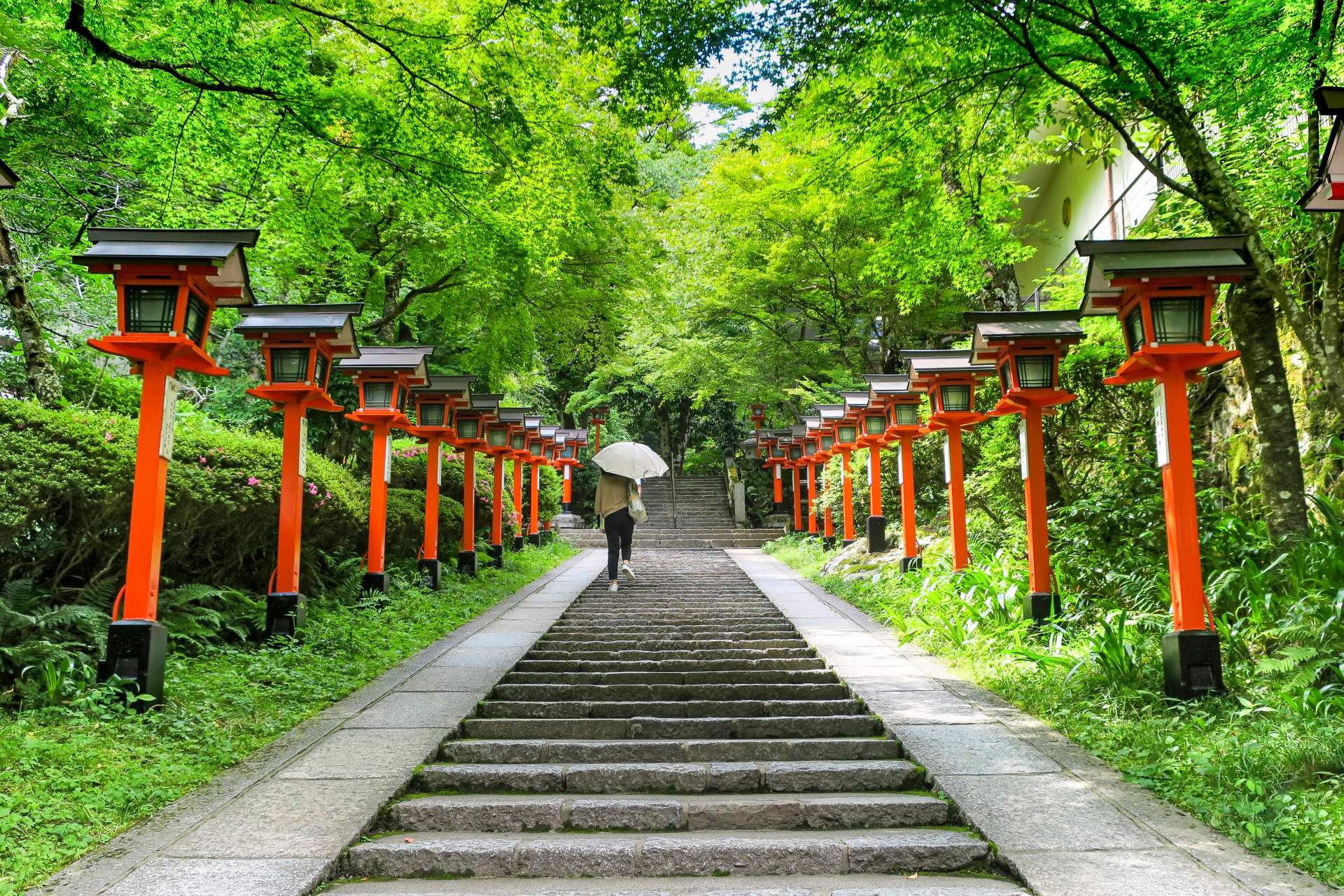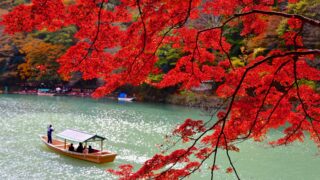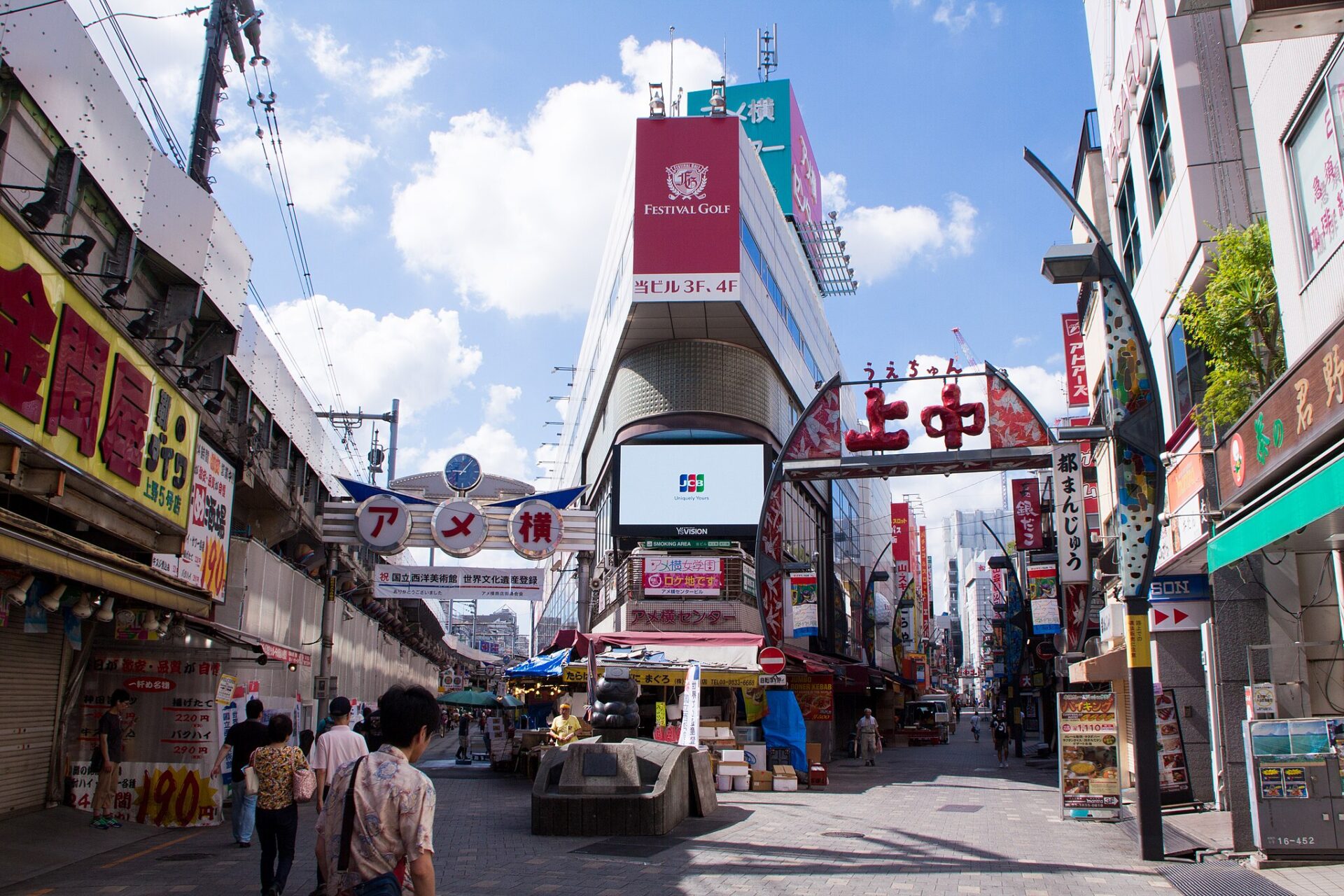
Misty Fujii is a Canadian DJ and writer who came to Japan seeking adventure and stuck around for love. Living life as a bucket list in progress, she’s as passionate about sharing her stories as she is experiencing them. She gets excited about collecting vintage vinyl records, food from all countries, traveling, and renovating her traditional Japanese house. She can be found on Instagram @djmisty
This post may contain some affiliate links. When you click through and make a purchase we may receive some commission, at no extra cost to you.
Ditch the crowds and discover a different side of Kyoto! Beyond the stunning temples and bustling city streets, the northern reaches of Kyoto offer a less-traveled adventure just waiting to be discovered. Here, you can find tranquil villages, lush greenery, and soothing hot springs perfect for unwinding. The best part? This peaceful paradise is only an hour or so north of central Kyoto City, making it the ideal escape from fellow tourists.
Keep reading to discover how you can enjoy the Northern areas and hidden gems of Kyoto!
Kurama
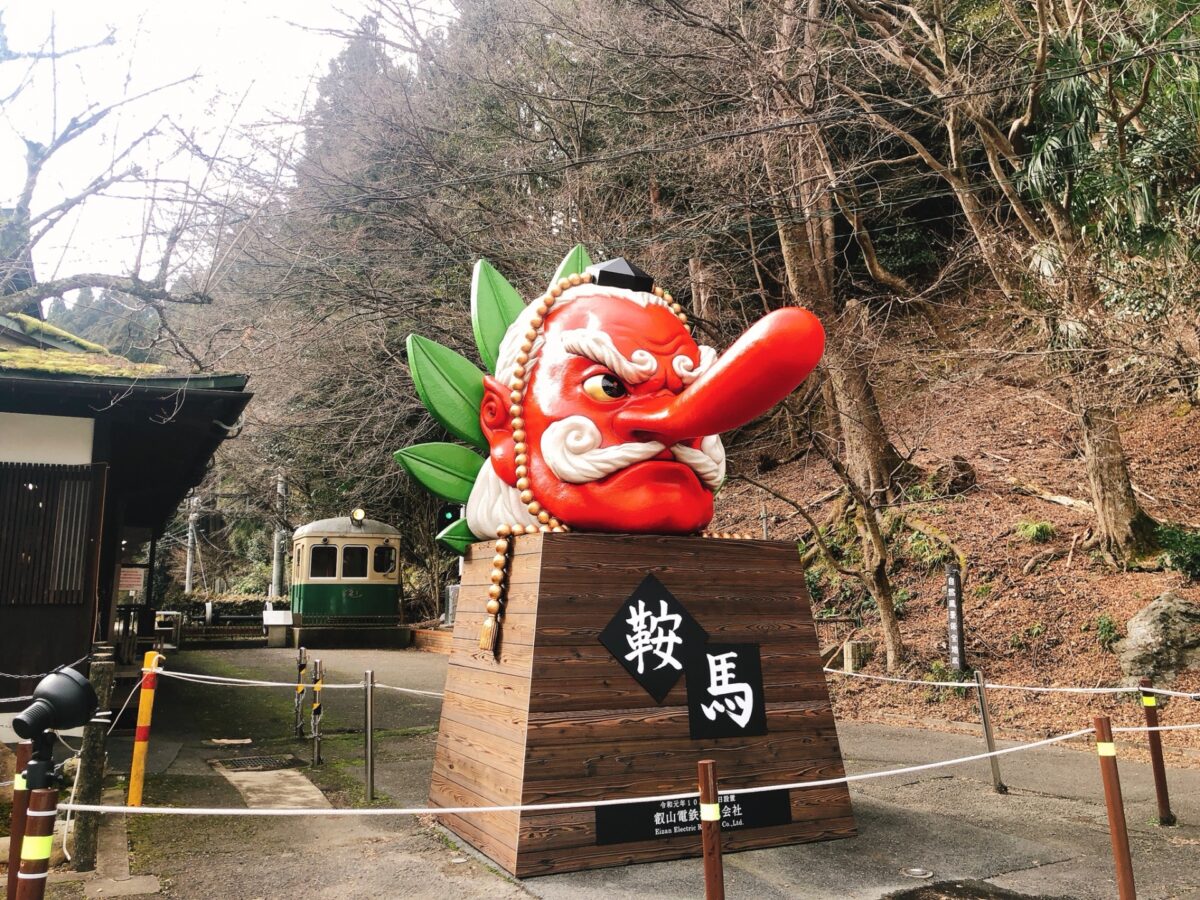
Just north of Kyoto City, nestled amidst verdant mountains, lies the enchanting rural town of Kurama. This isn’t just another day trip—it’s a journey into a world of lush forests, soothing hot springs, and ancient spiritual energy.
– Mt. Kurama
Just a short hop from Kurama Station, you’ll find Kurama-dera, a sprawling temple complex draped across the mountainside. Mount Kurama is a sacred place, the birthplace of Reiki, and a haven for hikers. The village of Kurama clings to the slopes centered around Kurama Temple, the Yuki-jinja shrine, and a soothing onsen. A cable car whisks you up to the main shrine for a small fee, while a winding path beckons for the hikers. When you reach the top, the path opens into a courtyard where the main hall stands, unveiling breathtaking views.
But the adventure doesn’t end there! Following the wooden steps further up the mountain, you can venture beyond the temple grounds and embark on a scenic hike towards Kibune. This woodland trail is dotted with even more enchanting little shrines.
– Kurama Onsen
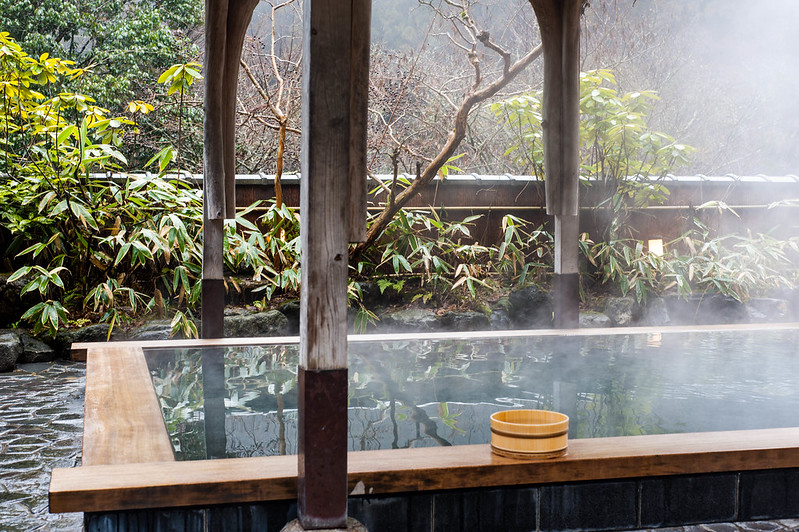
Craving a soak after exploring the mountains? Whether you’ve conquered the climb to Kurama-dera Temple or trekked over from Kibune, Kurama Onsen’s restorative waters are the perfect reward. Choose from indoor baths, or embrace nature in the outdoor pools. That’s where the real magic of Kurama Onsen lies with steaming, sulphurous waters, surrounded by breathtaking mountain views and the Kurama River. These therapeutic waters are renowned for soothing tired muscles and aching joints, leaving you feeling utterly refreshed.
– Kurama Temple
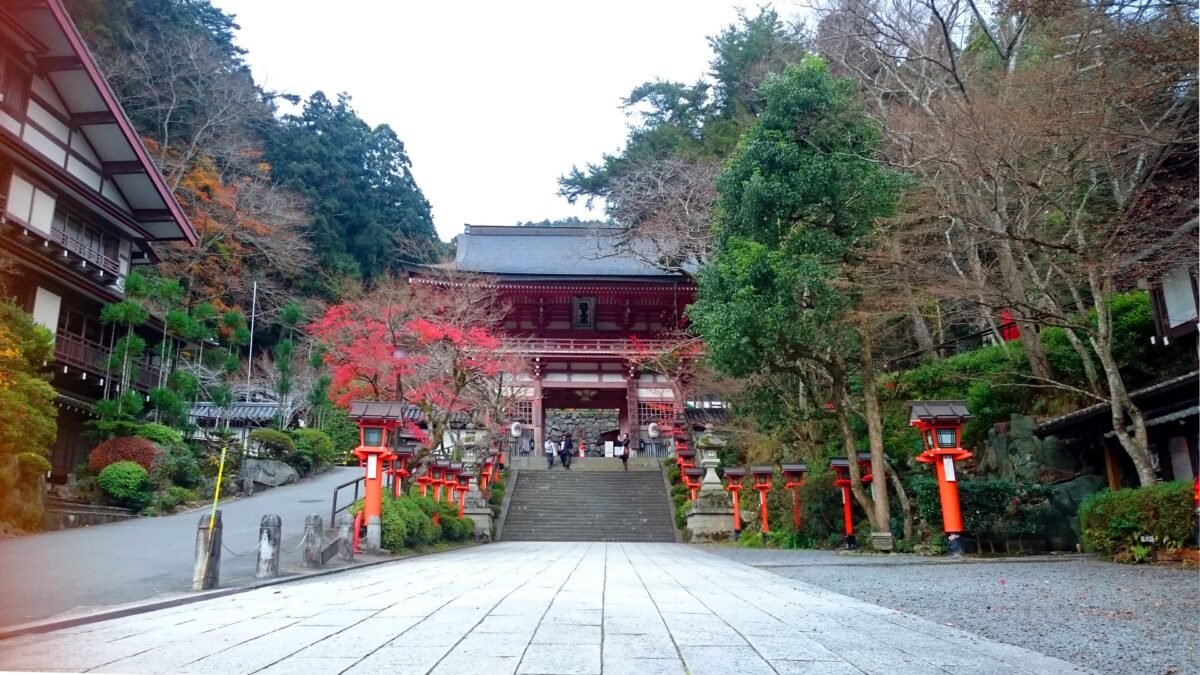
Kurama is crowned by the majestic Kurama-dera, a Buddhist temple dramatically perched on a steep, wooded mountainside. You’ll encounter winding mountain trails dotted with charming village scenes and the watchful eyes of tengu (mythical long-nosed creatures said to guard these sacred grounds). Whether you choose the gentle ascent by cable car or the invigorating hike through the forest, reaching the mountaintop courtyard with its sweeping vistas is an unforgettable experience. And just a short stroll away lies the enchanting village of Kibune and the serene Kifune Shrine, making Kurama the perfect launchpad for a day of discovery.
Kibune
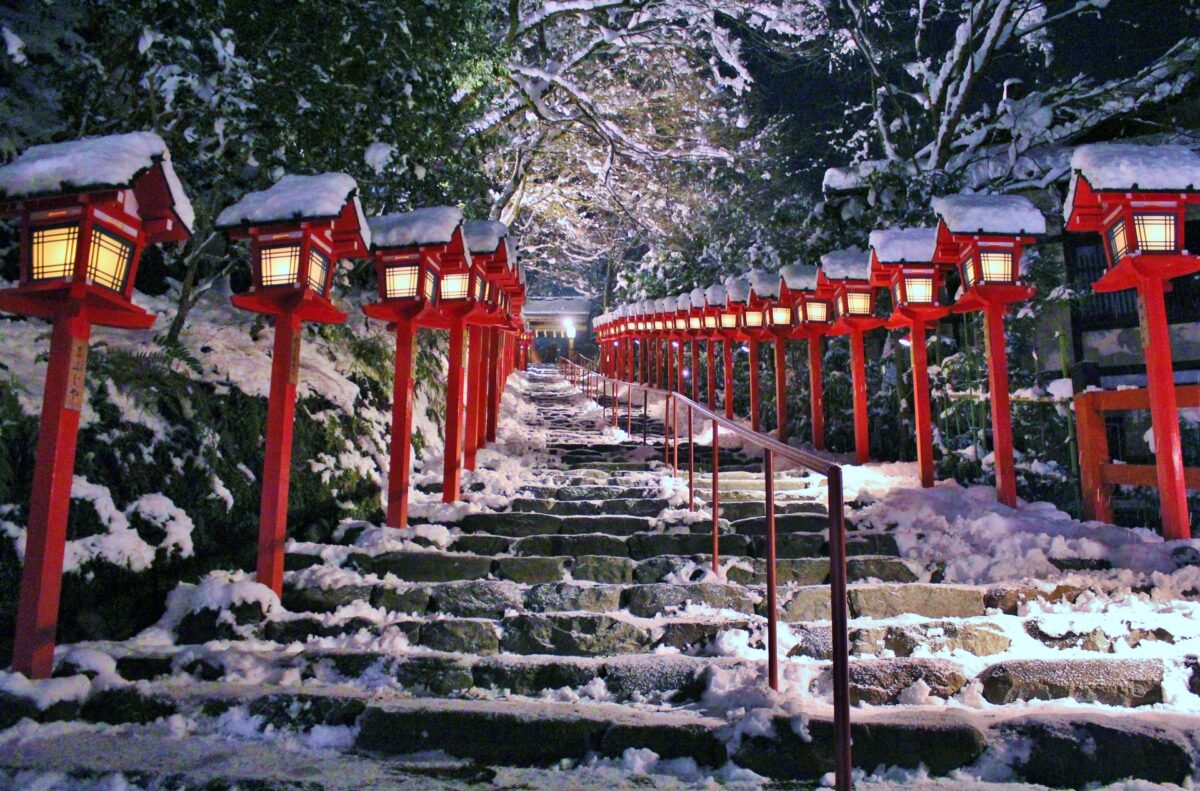
Nestled in Kyoto’s northern mountains, Kibune is a tiny town surrounding the mystical Kifune Shrine. Legend says a goddess journeyed from Osaka, finally landing at the very spot where the shrine now stands. Today, charming ryokans and restaurants line the picturesque Kibune River.
– Kifune Shrine & Water Omikuji
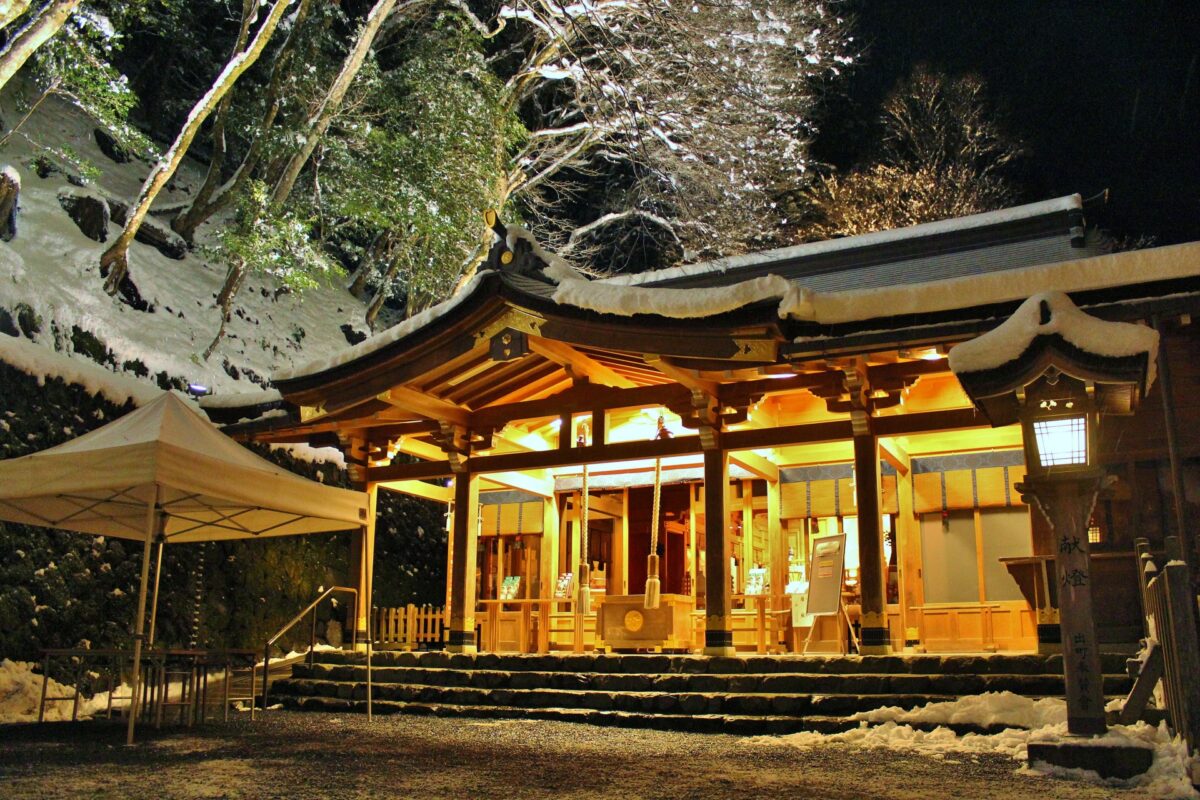
The journey to Kifune Shrine is an experience in itself! You can’t miss the photogenic red lanterns illuminating a stone staircase leading toward a sanctuary dedicated to the god of water, rain, and safe voyages. At Kifune Shrine, fortunes take on a unique form. The paper omikuji are blank until they touch the shrine’s water, revealing their messages as if by magic. After getting your fortune, continue exploring the original shrine about a kilometer further into the valley. You’ll find the legendary “boat stone” as a testament to the goddess’s presence, believed to be the burial site of her iconic yellow boat.
– Kawadoko
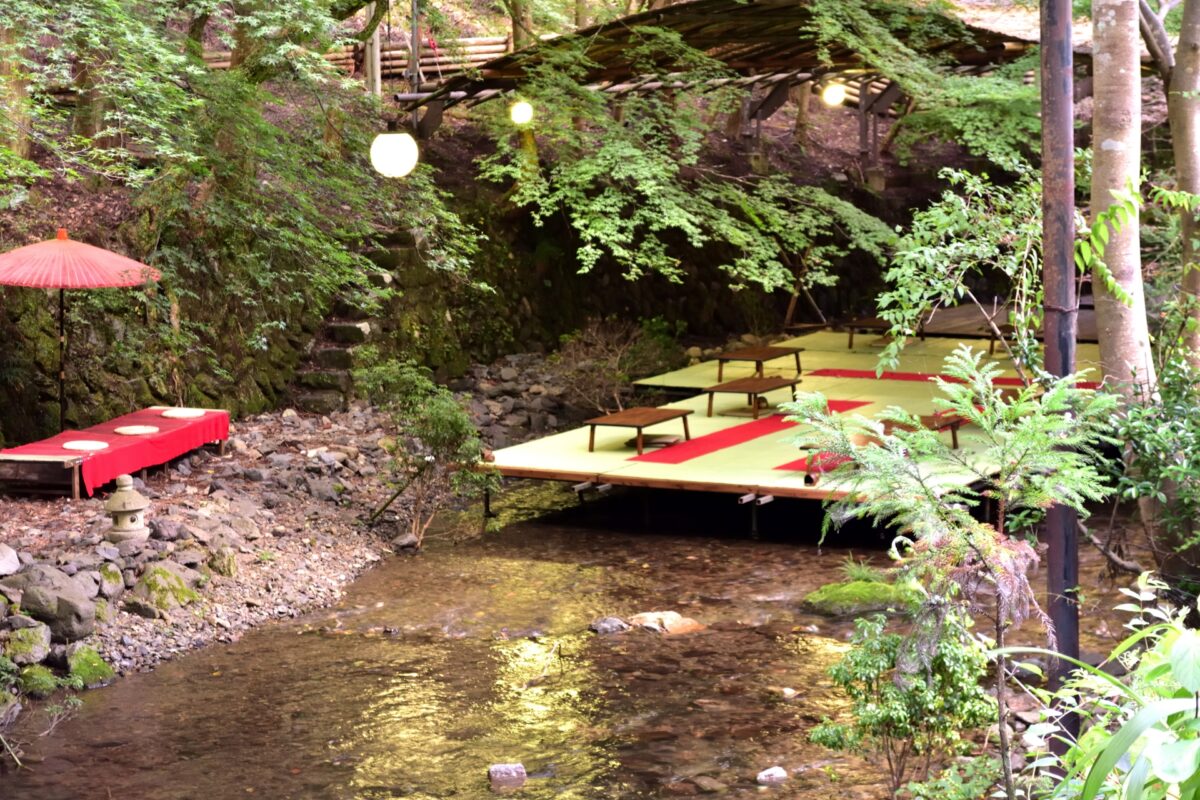
For a truly unforgettable dining experience, Kibune offers something truly special during the summer. This charming village is famous for its kawadoko, riverside decks, built over the Kibune River. These platforms transform into enchanting restaurants serving exquisite kaiseki meals, letting guests savor fresh, local cuisine with rushing water as the backdrop! Dining on these platforms is a refreshing and highly anticipated escape from the summer heat.
Ohara
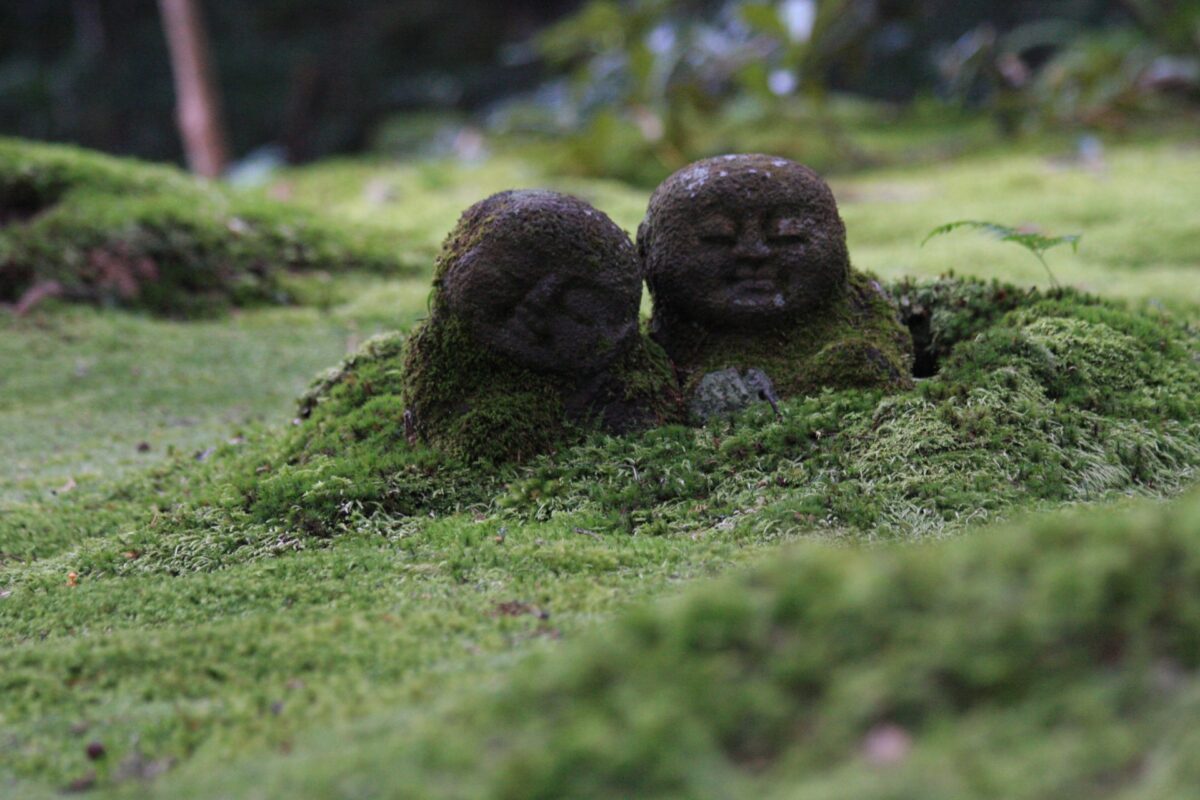
Ohara, a serene mountain village just an hour north of Kyoto, is also worth discovering. This ancient farming community, technically still within Kyoto’s city limits, offers a tranquil escape into rural Japan. Rich with history and spirituality, Ohara is known for its natural beauty.
– Raigo-in Temple & Otonashi Falls
Escape the hustle (or any signs of life, really) and let yourself get swallowed by the deep forest; this is where tranquility reigns supreme at Raigoin Temple. Founded in the mid-9th century, its weathered main hall and bell tower stand as proud relics of the Muromachi Period (1333-1573), while a petite stone pagoda whispers tales of the earlier Kamakura era (1192-1333).
Just a short trek away, Otonashi no Taki (the “soundless waterfall”) calls. Follow the well-marked paths through the woods to discover a gentle cascade over the mossy rocks. Legend has it that the waterfall’s voice merged with nearby monks’ chants, leaving an almost ethereal silence.
– Various Temples & Emperor’s Tombs
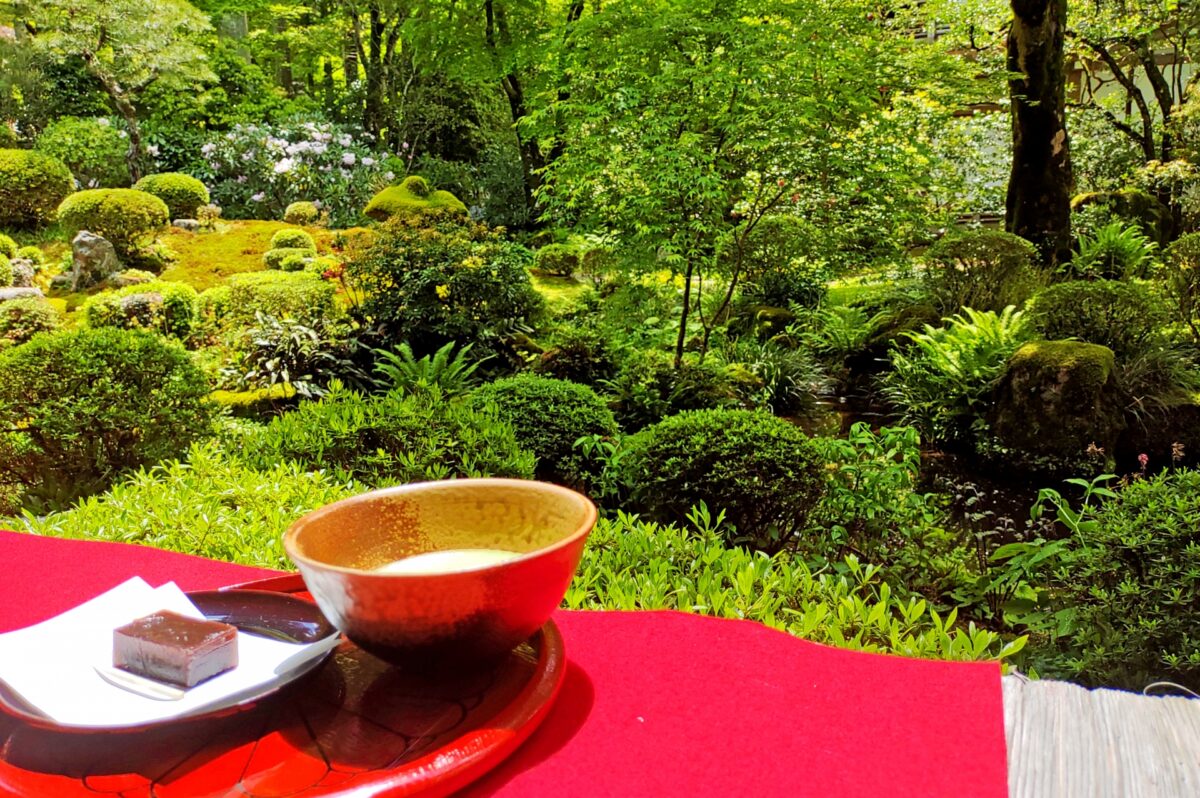
Halfway up the wooded slopes east of Ohara, you’ll find Sanzenin Temple. This sprawling complex of buildings and gorgeous gardens was established in the early Heian Period (794-1185) by the legendary monk Saicho, the brains behind the Tendai sect of Japanese Buddhism. The stroll up from town is a treat in itself, lined with cute little shops. The smaller temples clustered around Sanzenin are also part of the Tendai family, consisting of a building or two and a little garden.
Across the valley, the hillside offers a few more spots to explore, though it’s a bit quieter. Jakkoin Temple is the main draw, another Tendai temple with a rich history. Ohara has another cool spot: Hosen-in Temple. But fair warning, it’s got a slightly creepy side. Inside, you’ll find ceilings stained with blood from an ancient samurai battle. They call these “chitenjo” (blood ceilings), and they’re a pretty intense reminder of the samurai’s life (and death). If that’s a bit much, the temple also has a beautiful garden to chill out in.
Ohara isn’t just about serene temples; it also contains the final resting places of two emperors: Go-Toba (who died in 1239) and Juntoku (who followed in 1242).
Takao
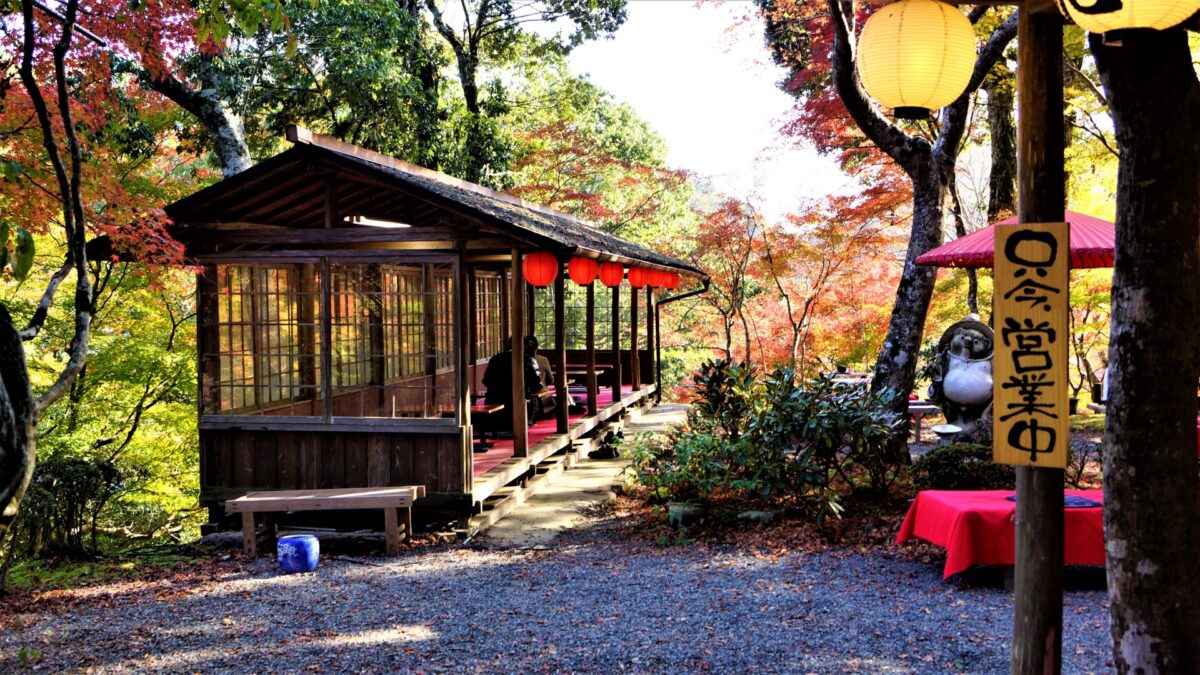
Finally, escape the Kyoto crowds and head to Takao, on the north side of Arashiyama. This mountainous, sparsely populated area feels worlds away, with three historic temples hidden in its forested valley.
– Temples
Jingoji Temple is Takao’s star attraction, but getting there is half the adventure. Prepare to climb a dramatic (and, yes, slightly exhausting) flight of stone steps. Once you conquer the stairs, you’ll meet a grand entrance gate, majestic halls, and a path leading to a breathtaking valley panorama. Grab a small clay disc inscribed with wishes and toss it into the valley below. It’s a fun, quirky tradition, and who knows, your wish might just come true!
Then, step back to 774 AD at Kozanji Temple, a World Heritage Site brimming with history and humor. This is where you’ll find what some call Japan’s first manga: hilarious animal caricatures lampooning Heian-era court life. Kozanji is also the birthplace of Japanese tea cultivation. The original tea plantation has been brought back to life, ready for you to explore and try a refreshing cuppa!
Finally, the humble offshoot of Jingoji, Saimyoji Temple, might not be as grand, but it has its own charm. The real showstopper here is the vibrant vermilion Shigetsukyo Bridge. This fiery red bridge gracefully arches over a river, creating a picture-perfect entrance to the temple. It’s a photographer’s dream and a symbol of Saimyoji’s serene beauty.
– Hiking
There are a few hiking options in Takao. Looking for one of the best? The Takao to Hozukyo trail delivers. This route offers a perfect mix of cultural exploration and natural beauty. Starting in Takao, you’ll explore two magnificent temples before embarking on a scenic descent. The path follows the Kiyotaki River, offering a refreshing riverside walk and the chance to visit the impressive Kuya-no-taki Waterfall. The hike culminates at JR Hozukyo Station, providing a convenient return to Kyoto.
Short on time but big on scenery? The shorter Kiyotaki River trail is your answer. This two-to-three-hour hike skirts the base of Mount Atago, showcasing some of the most spectacular landscapes in Kansai.
– Yuzu Bath
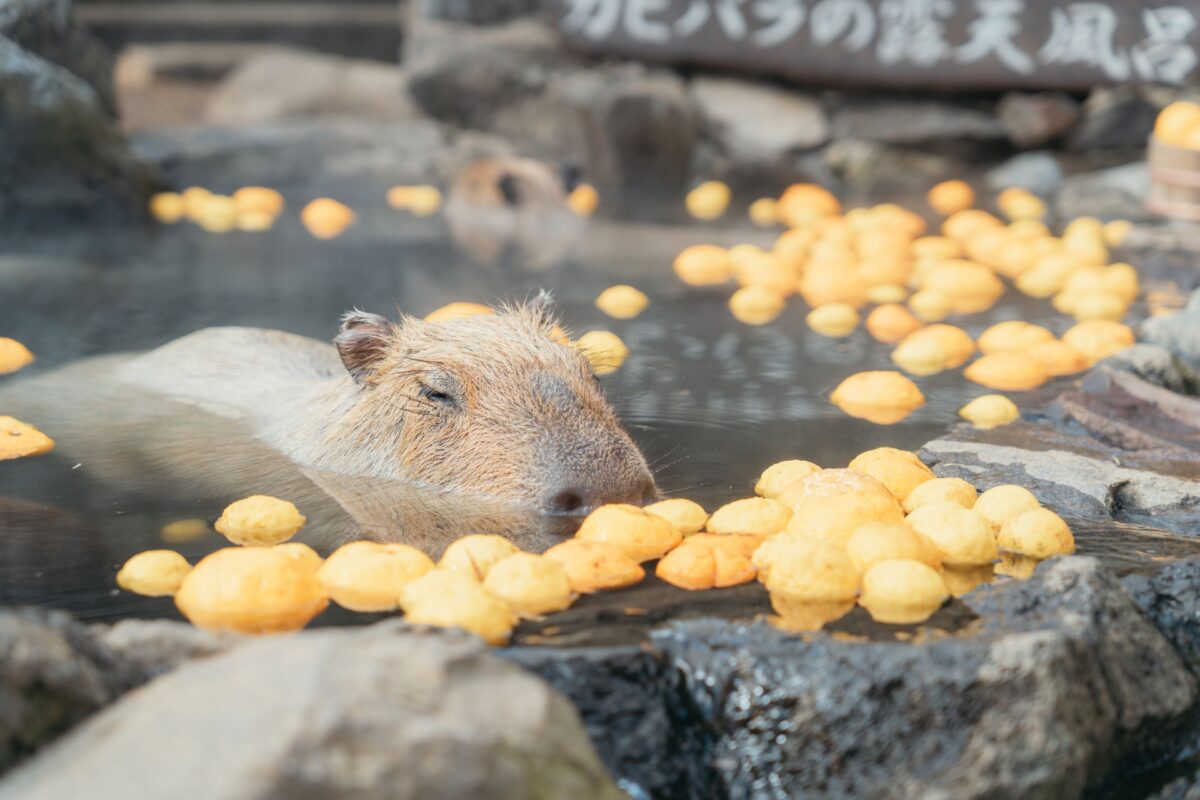
Beyond its skin-softening magic and medicinal might, yuzu is a tiny citrus with good fortune. Its vibrant color and invigorating scent have long been considered auspicious, especially during the chill of winter. Japanese people love sinking into a steaming yuzu bath on the Winter Solstice (or any frosty night!), inviting health and happiness for the year ahead. Some even say its powerful aroma can banish bad luck and ward off evil spirits!
In the Takao’s mountain village of Mizuo, yuzu is more than just a bath-time treat. It’s woven into their cuisine, from zesty condiments to fragrant dishes. During the December harvest, Mizuo truly comes alive with the scent of yuzu as freshly picked fruits float in steaming baths, a cherished winter tradition you can be part of if you book it in advance!
Japan Wonder Travel Tours in Kyoto
When you are visiting Kyoto and you need some help organizing your trip, you came to the right place. We’re happy to help you make your trip to Kyoto the best trip ever. We can advise you on where to go or even better, show you around with a local, English speaking guide. Let us help you create safe, comfortable, and unforgettable memories in Kyoto!
▶Kyoto 8h Private Custom Highlight Tour with Licensed Guide
On this full-day private tour of Kyoto, you will be able to see the highlights of Kyoto in just one day and at the same time develop a deeper understanding of both the culture of the area and Japan as a whole.
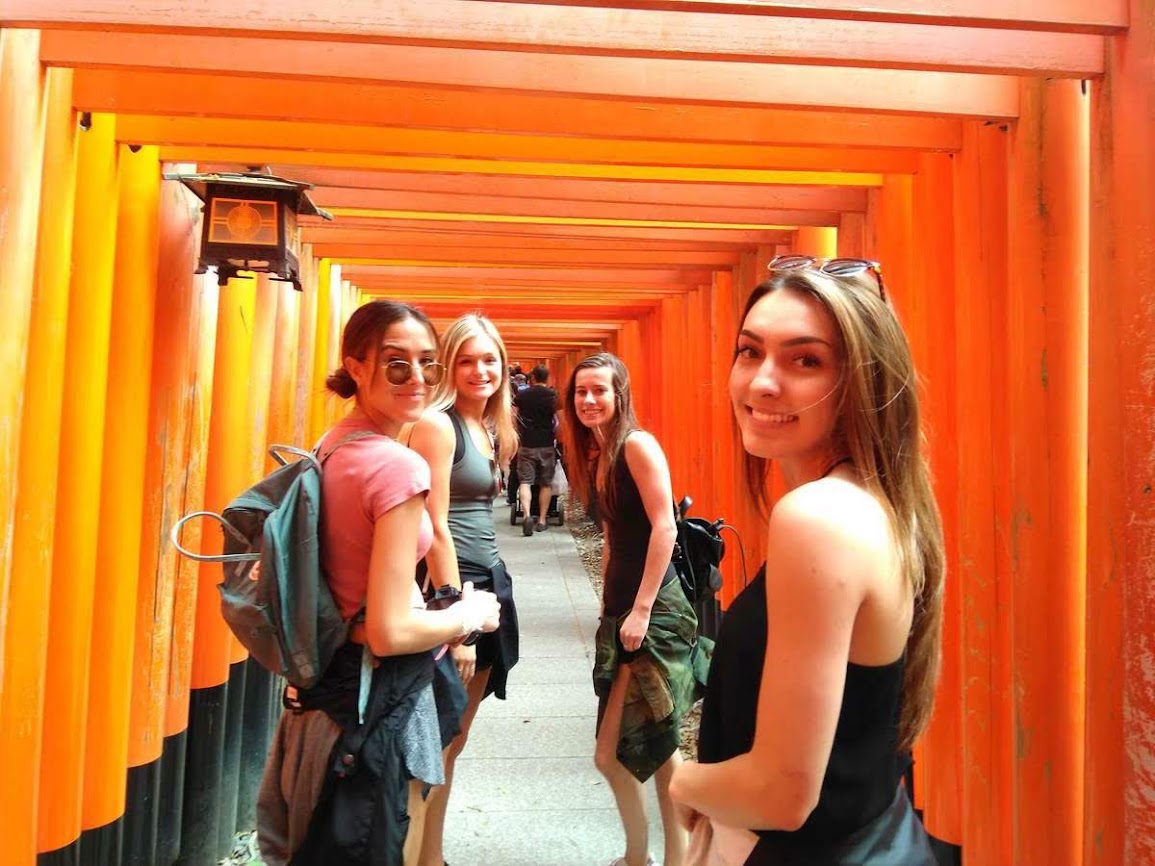
▶Meet a Geisha in Kyoto: Guided Walk in Gion and Enchanted Time with Maiko
Meet a Maiko, a geisha in Kyoto, and enjoy a walking tour in Gion, the geisha district. See an authentic Japanese tradition unfold before your eyes that has existed for hundreds of years. You’ll have chance to take a photo with Geisha!

▶Explore Nishiki Market: Food & Culture Walk
If you’re looking to learn more about the culture and the local cuisine of Kyoto, this is the perfect tour for you! Take part in this Kyoto food and drink tour and explore the 400-year-old market and the famous surrounding areas.
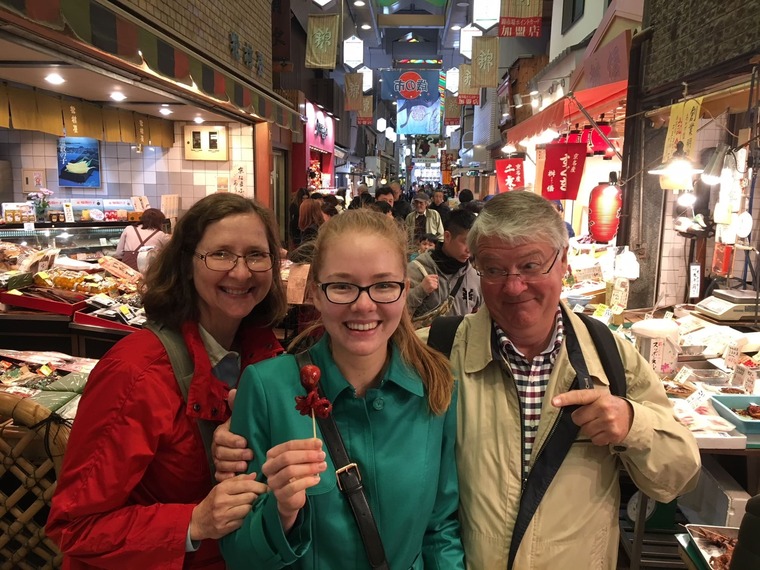
▶Kimono Experience
Kyoto is the best city to explore in kimono, Japanese traditional clothing. You can choose the one you like the most from several patterns and colors at the rental shop. In Kyoto, two locations are both accessible from the main tourist attractions which makes it easy to try it on and explore the city for a day!
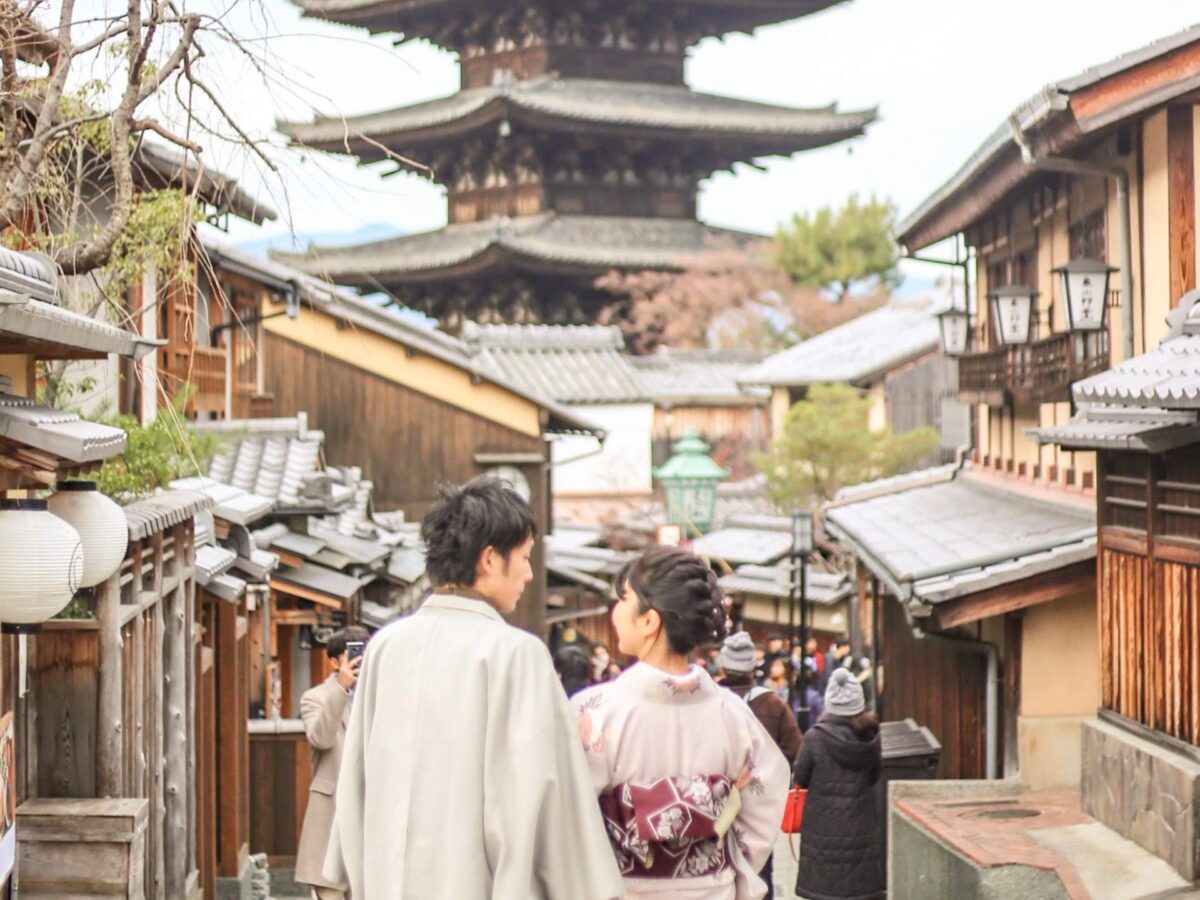
Follow us on Instagram, Facebook, Twitter, and TikTok for more travel inspiration. Or tag us to get featured!
Happy traveling!
